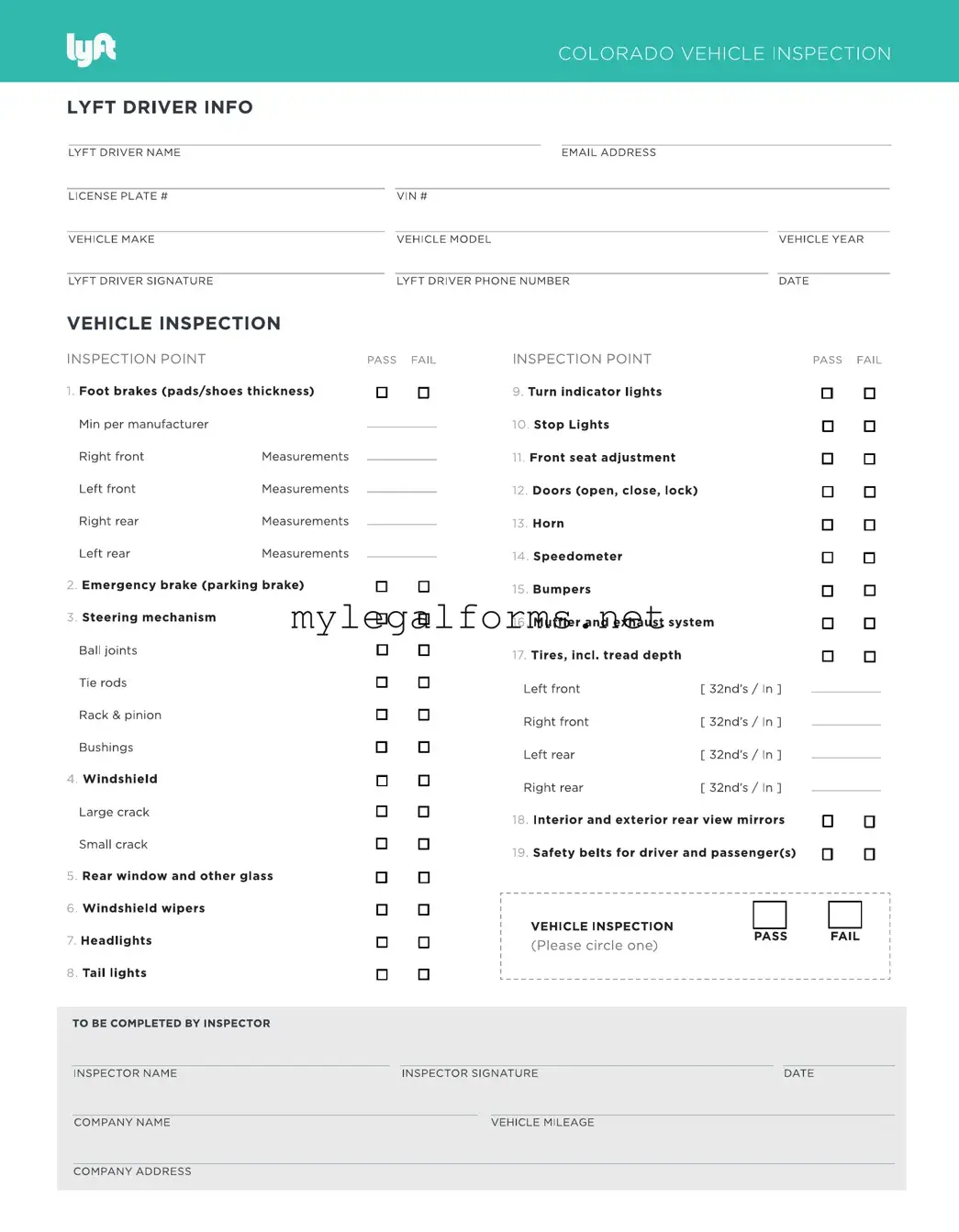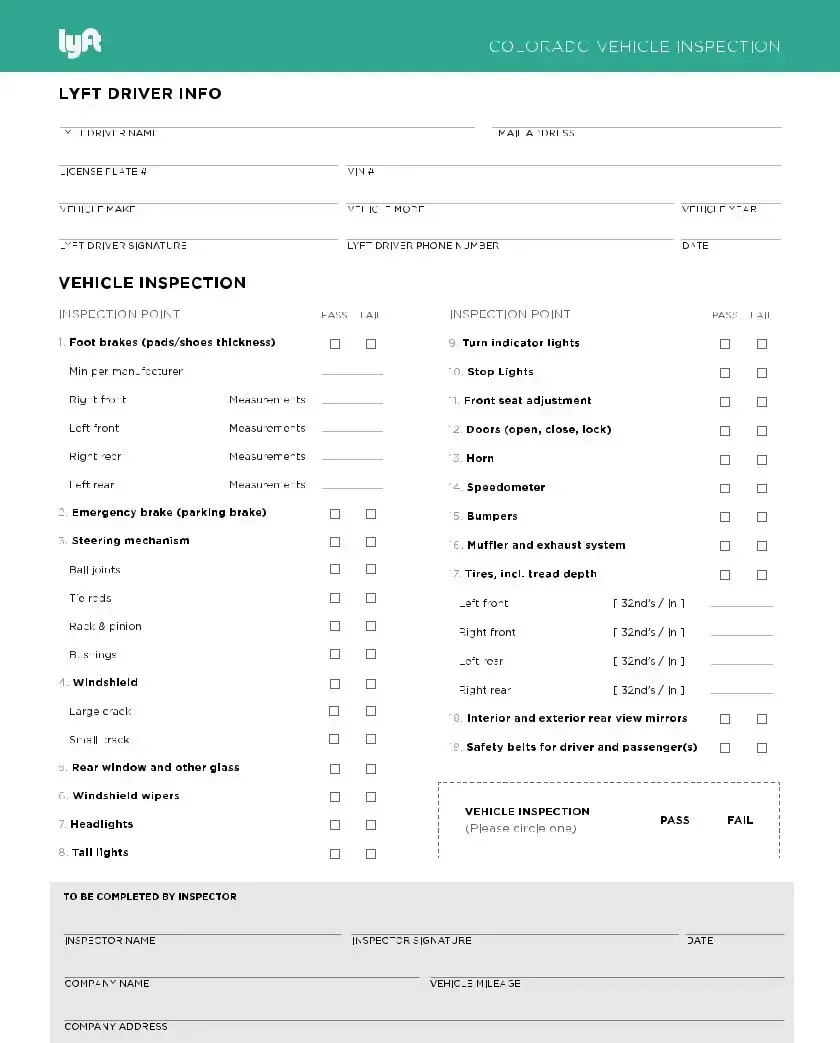When it comes to ensuring the safety and reliability of ridesharing services, the Lyft Inspection form plays a crucial role. This comprehensive document is designed to assess the condition of vehicles used by Lyft drivers, ensuring they meet the company's safety standards and local regulations. The inspection covers various aspects of the vehicle, including its exterior, interior, and mechanical components. Key areas of focus include the brakes, lights, tires, and overall cleanliness. Additionally, the form requires drivers to provide information about their vehicle's registration and insurance status, reinforcing the importance of compliance with state laws. By completing this inspection, drivers not only protect themselves and their passengers but also contribute to a safer ridesharing environment for everyone. Understanding the details of the Lyft Inspection form is essential for both current and prospective drivers, as it highlights the responsibilities and expectations involved in maintaining a vehicle suitable for ridesharing.

